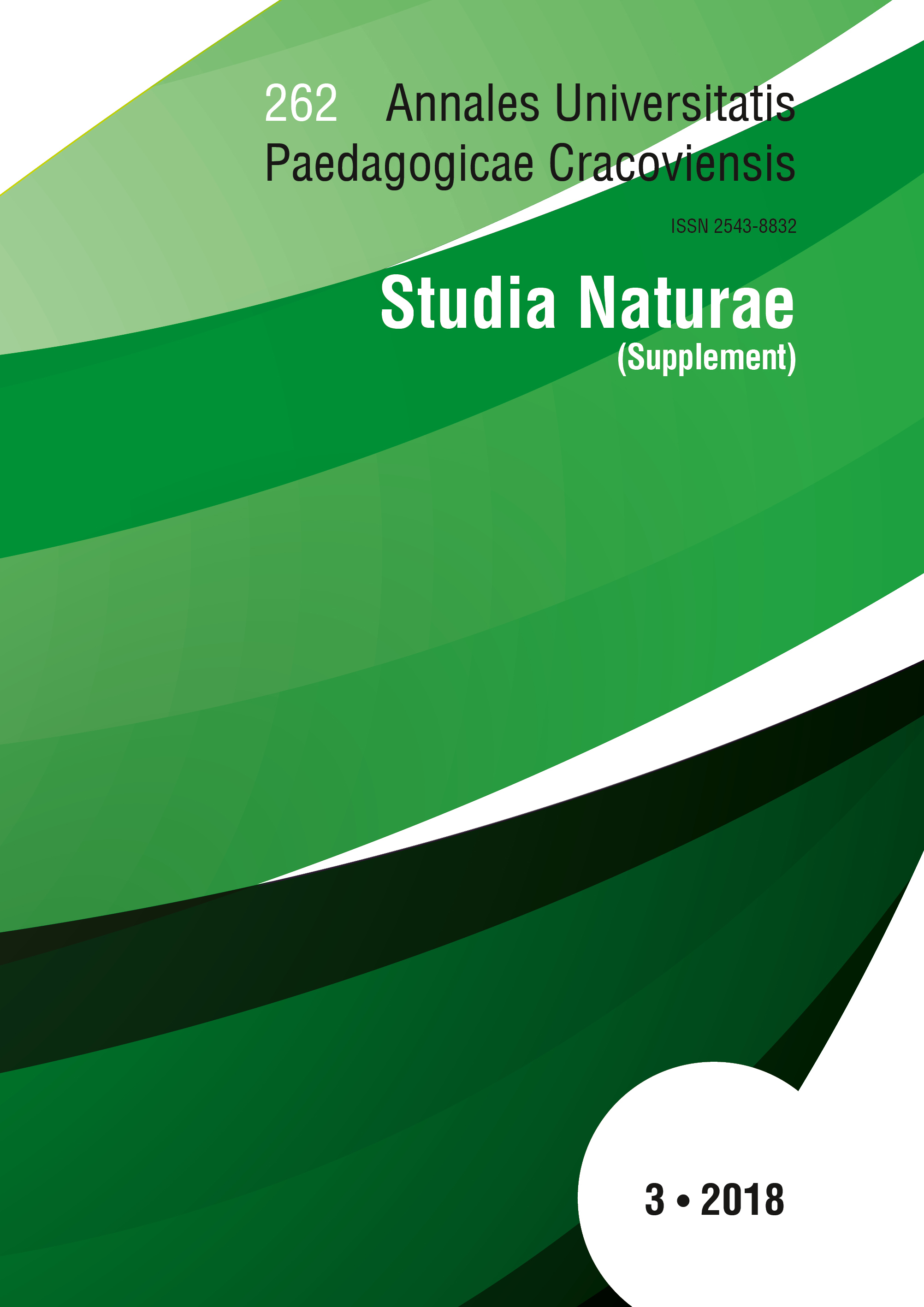The effect of mixed herb extract on selected stress parameters in broiler chickens of three genetic lines
DOI:
https://doi.org/10.24917/25438832.3supp.8Keywords:
adrenaline, broiler chickens, corticosterone, H:L, mixed herb extract, noradrenalineAbstract
The aim of the study was to determine the effect of adding a mixture of anti-stress herbs to drinking water on stress hormone levels and the heterophil to lymphocyte ratio in the blood of intensively reared broiler chickens of three genetic lines. The experiment was performed with ‘Ross 308’, ‘Cobb 500’ and ‘Hubbard Flex’ broiler chickens, which were divided into three experimental groups. Birds were maintained on litter for 42 days at a stocking density less than 33 kg/m2. All the groups were provided with the same environmental and feeding conditions. In each group from 21 to 35 days of rearing, water drinkers were supplemented for 5 h/day (08:00-13:00 hours) with an alcoholic extract from mixed herbs (30% chamomile, 10% oregano, 10% yarrow, 10% knotgrass, 10% valerian, 20% inflorescence of large-leaved lime) at 2 ml/l water. At 21, 28, 35 and 42 days of rearing, blood was collected from 10 birds per group to determine corticosterone, noradrenaline and adrenaline levels. The heterophil to lymphocyte ratio (H:L) was also calculated. On day 42 of the study, 500 broiler chickens were characterised by the lowest noradrenaline concentration and a lower H:L ratio compared to ‘Ross 308’ and ‘Hubbard Flex’ (p ≤ 0.05) and ‘Ross 308’ chickens (p ≤ 0.01), respectively. It was concluded from the study that the herb extract had the most favourable effect on relieving the body’s physiological response to stress, and thus on improving welfare in ‘Cobb 500’ compared to ‘Ross 308’ and ‘Hubbard Flex’ broilers. It can therefore be considered that active substances in herbs have varying effects on the body of broiler chickens of different origin.
Downloads
Metrics
References
Cheng, H.W., Dillworth, G., Singleton, P., Chen, Y., Muir, W.M. (2001). Effects of group selection for productivity and longevity on blood concentrations of serotonin, catecholamines, and corticosterone of laying hens. Poultry Science, 80, 1278–1285. https://doi.org/10.1093/ps/80.9.1278
Kannan, G., Heath, J.L., Wabeck, C.J., Souza, M.C.P., Howe, J.C., Mench, J.A. (1997). Effects of crating and transport on stress and meat quality characteristics in broilers. Poultry Science, 76, 523–529. https://doi.org/10.1093/ps/76.3.523
Kober, A.K.M.H., Aoyama, M., Sugita, S. (2010). Immunohistochemical localization of catecholamine biosynthetic enzymes in the adrenal gland of the domestic fowl (Gallus domesticus). Poultry Science, 89, 1709–1715. https://doi.org/10.3382/ps.2009-00588
Najafi, P., Torki, M. (2010). Performance, blood metabolites and immunocompetence of broiler chicks fed diets included essential oils of medicinal herbs. Journal of Animal and Veterinary Advances, 9(7), 1164–1168. https://doi.org/10.3923/javaa.2010.1164.1168
Nasir, Z., Grashorn, M.A. (2010). Effects of intermittent application of different Echinacea purpurea juices on broiler performance and some blood parameters. Archiv fur Geflügelkunde, 74(1), 36–42.
Pohle, K., Cheng, H.W. (2009). Comparative effects of furnished and battery cages on egg production and physiological parameters in White Leghorn hens. Poultry Science, 88, 2042–2051. https://doi.org/10.3382/ps.2009-00171
Post, J., Rebel, M.J., Huurne, A.A.H.M. (2003). Physiological effect of elevated plasma corticosterone concentrations in broiler chickens. An alternative means by which to assess the physiological effects of stress. Poultry Science, 82, 1313–1318. https://doi.org/10.1093/ps/82.8.1313
Puvadolpirod, S., Thaxton, J.P. (2000a). Model of physiological stress in chickens. 1. Response parameters. Poultry Science, 79, 363–369. https://doi.org/10.1093/ps/79.3.363
Puvadolpirod, S., Thaxton, J.P. (2000b). Model of physiological stress in chickens. 2. Dosimetry of adrenocorticotropin. Poultry Science, 79, 370–376. https://doi.org/10.1093/ps/79.3.370
Puvadolpirod, S., Thaxton, J.P. (2000c). Model of physiological stress in chickens. 4. Digestion and metabolism. Poultry Science, 79, 383–390. https://doi.org/10.1093/ps/79.3.383
Scanes, C.G (2016). Biology of stress in poultry with emphasis on glucocorticoids and the heterophil to lymphocyte ratio. Poultry Science, 95, 2208–2215. https://doi.org/10.3382/ps/pew137
Selye, H. (1936). A syndrome produced by diverse nocuous agents. Nature, 138, 32. https://doi.org/10.1038/138032a0
Skomorucha, I., Sosnówka-Czajka, E. (2013). Effect of water supplementation with herbal extracts on broiler chicken welfare. Annals of Animal Science, 13(4), 849–857. https://doi.org/10.2478/aoas-2013-0057
Virden, W.S., Thaxton, J.P., Corzo, A., Dozier, III W.A., Kidd, M. (2007). Evaluation of models using corticosterone and adrenocoticotropin to induce conditions mimicking physiological stress in commercial broilers. Poultry Science, 86, 2485–2491. https://doi.org/10.3382/ps.2006-00215
Voljč, M., Levart, A., Žgur, S., Salobir, J. (2013). The effect of α-tocopherol, sweet chestnut wood extract and their combination on oxidative stress in vivo and the oxidative stability of meat in broiler. British of Poultry Science, 54(1), 144–156. https://doi.org/10.1080/00071668.2012.760190
Wallace, R.J., Oleszek, W., Franz, C., Hahn, I., Baser, K.H.C., Mathe, A., Teichmann, K. (2010). Dietary plant bioactives for poultry health and productivity. British of Poultry Science, 51(4), 461–187. https://doi.org/10.1080/00071668.2010.506908
Wang, L., Piao, X.L., Kim, S.W., Piao, X.S., Shen, Y.B., Lee, H.S. (2008). Effects of Forsythia suspensa extract on growth performance, nutrient digestibility, and antioxidant activities in broiler chickens under high ambient temperature. Poultry Science, 87, 1287–1294. https://doi.org/10.3382/ps.2008-00023
Yesilbag, D., Gezen, S.S., Biricik, H., Bulbul, T. (2012). Effect of rosemary and oregano volatile oil mixture on performance, lipid oxidation of meat and hematological parameters in Pharaoh quails. British of Poultry Science, 53(1), 89–97. https://doi.org/10.1080/00071668.2012.654763
Zhang, H.Y., Piao, X.S., Zhang, Q., Li, P., Yi, Q., Liu, J.D., Li, Q.Y., Wang, G.Q. (2013). The effect of Forsythia suspensa extract and berberine on growth performance, immunity, antioxidant activities, and intestinal microbiota in broilers under high stocking density. Poultry Science, 92, 1981–1988. https://doi.org/10.3382/ps.2013-03081

